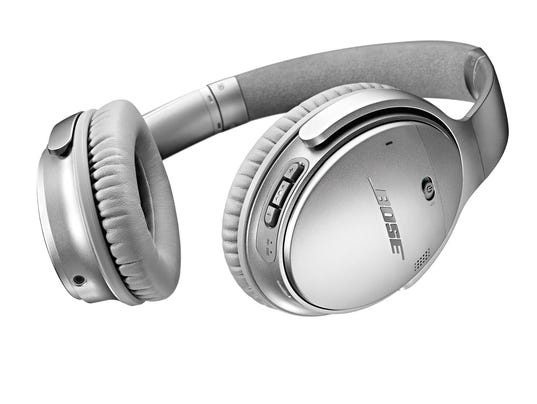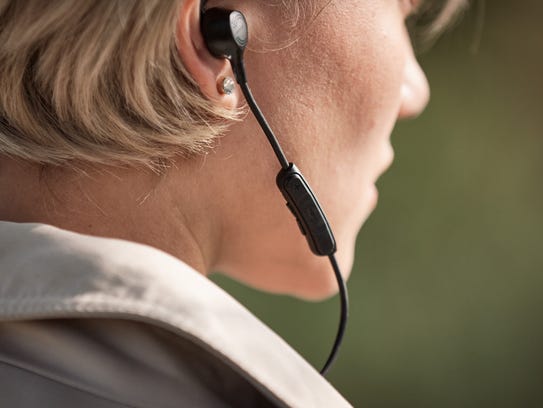
NEW YORK—The company credited with inventing premium noise cancelling headphones is finally taking such headphones wireless.
Bose has just unveiled four distinct wireless headphones, headlined by two noise cancelling Bluetooth models, the $349.95 around ear QuietComfort 35 model that went on sale Sunday and the $299.95 QuietControl 30s that come out in September.
For all its strengths as a recognizable top quality brand (typically with prices to match), Bose has been a laggard in the increasingly crowded wireless category. These aren't Bose's first wireless headphones, but they're the first with such top grade noise cancellation smarts. Indeed, the QC 35s and QC 30s prove that Bose intends to be a player in the space.
On the QC35s that I got to try on during a relatively short, controlled demonstration in New York City, Bose places microphones inside and outside the ear cups, where they measure and send unwanted sounds to two proprietary digital electronic chips -- one for each ear -- which respond, Bose explains, with a precise, equal and opposite signal in less than a fraction of a millisecond. The idea of course is that you can hear the music you want to hear, while dramatically reducing unwanted audible distractions from, say, an airplane engine or subway car.
The QC35s are relatively light and felt comfortable, not unlike their wired QC25 predecessors which they look a lot a like and which will remain in the Bose product lineup. Most importantly they sounded just as good, at least during my brief listening period.
According to Bose, the battery in the QC35 will last up to 20 hours and work still, without noise cancellation, once the battery is exhausted. You can also use them, if you choose, with wires.

I also got to briefly try the QC30s. Here we have a very different design: two tiny earbuds (with a total of six microphones) and a band you wear around the back of your neck that houses the other components. In a first from Bose, you can control how much of the ambient sound to block out via dedicated controls on the headphones themselves or via a slider inside a Bose app. So while you might block out external sounds to the max on an airplane, presumably you’d want to be able to hear at least some sounds when you’re dashing through congested city streets. Bose says the battery will last up to ten hours.
Bose’s other new headphones, the $149.95 SoundSport that are available immediately, and the $199.95 SoundSport Pulse that are also promised come September, are designed for the workout crowd. The latter will include a built-in heart rate monitor that Bose claims will be as precise as a chest strap. (Samsung also just introduced wireless headphones with heart rate measurement capabilities.) These silicone, umbrella-shaped earbuds are sweat and water-resistant but they don’t have the noise cancelling technology that’s inside their more expensive siblings. Bose rates the battery life at up to 6 hours for SoundSport and up to 5 hour for the Pulse model.
The origins of Bose’s noise cancelling technology dates as far back as 1978. As the story goes, company founder Dr. Amar G. Bose couldn’t enjoy the music he was listening to on a flight from the U.S. to Europe while wearing headphone supplied by the airplane.
Source :http://www.usatoday.com/

Out Of Topic Show Konversi KodeHide Konversi Kode Show EmoticonHide Emoticon